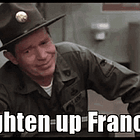So You Want to Control the Controllables… (part 2)
Looking for intersections
In part 1, I began by inviting you to reconsider what control is and why coaches feel the desire to control so strongly. In part 2, I invite you to shift from control to intervention and what the purpose of interventions are. You can read part 1 here.
So how do you choose when to intervene? Choosing when to intervene is about looking for what Gregory Walton and David Yeager, two leaders in the growth mindset field, called “the intersection between vulnerability and opportunity” (p. 221)1. In the coaching context, vulnerability refers not to weakness but to openness. Coaches, in their desire to control and be viewed as experts, regularly treat any stoppage, natural or otherwise, as an opportunity to demonstrate their expert knowledge. But the opportunities that Walton and Yeager wrote about are not coaches’ opportunities. Instead, the opportunities belong to the athletes.
The opportunities you’re looking for are ones created when an athlete notices a disconnect between what they expected and what actually happened. Often, athletes are aware of the little things that led to the outcome they just saw. Those moments aren’t opportunities because the athlete, despite not getting the outcome they wanted, is still aware of what made the outcome different. Those are just moments and they happen all the time. You can let go of moments like these that result in, at best, small, almost-invisible changes. They’re like hourly fluctuations in a stock’s price during a day’s trading. A coach’s work is in recognizing the difference between those moments and opportunities.
One way coaches search for those opportunities is by asking athletes what they notice. They listen for clues in the responses that suggest a lack of understanding rather than a lack of execution. Asking athletes what they wanted to do is another way to probe for opportunities. Beyond revealing opportunities, these kinds of questions also reveal vulnerability. When a coach hears an athlete saying they aren’t sure what happened or what they should do, these kinds of responses suggest the athlete is open to learning. Coaches can also learn physical cues that suggest similar opportunities and vulnerability. As you learn to recognize moments in which opportunity and vulnerability intersect, you realize that these are the moments that contain the seeds for change. This is the second lesson in controlling the controllables, learning when situations can benefit from your intervention.
Situations in which opportunity and vulnerability intersect are not as common as current coaching behaviors suggest. Coaches, acting from a desire to control, will intervene at any point where they can demonstrate expertise, regardless of the presence of opportunity or vulnerability. But, if you intervene with a desire to influence rather than to control, you are more likely to create situations that favor change.
If, as I mentioned above, the future is likely to be very similar to the past, a goal of coaching can be to create moments in the present that contain seeds of change. You want your coaching to facilitate change but not demand it. But that doesn’t mean you should create more interventions in an effort to facilitate more change.
Every time you stop what’s happening in practice or in competition, you are creating a moment for change, but with no guarantee of if change will occur or what the change will be. It’s helpful to remember the concept of flow to understand why intervening often can be counterproductive. Flow states are tremendous facilitators of learning and performance. The more you stop what a player or team is doing so you can demonstrate your expert knowledge, the less likely athletes are to enter and/or remain in flow. Remember that the most important thing they can attend to is what they’re doing, not what you’re saying. The intersection of opportunity and vulnerability can disrupt flow and a wise intervention by a coach can help athletes reenter flow rather than detract from flow. This is the third lesson of controlling the controllables: just because you can intervene doesn’t mean you should.
When you recognize which situations are better for intervention, what do you do to plant seeds for change? There are two very different kinds of seeds you can plant. The first kind of seed you can plant are those that might change situations. These are the seeds of chance because your intervention creates a potential inflection point that didn’t exist before your intervention. The second kind of seed you can plant are those that might change people. Those are the seeds of learning because learning is about people changing their behavior as they face changing conditions.
I call the first kind of seed the seeds of chance because game theory teaches that some types of games, like sports, have an additional, unseen player: chance. Opponents in sports choose strategies and counter-strategies in their efforts to secure victory but chance is also playing at the same time. Gusts of wind and players slipping on a wet surface aren’t strategies, they’re chance having a say in the outcome. Coaches’ interventions that create additional space for chance plant seeds that may change situations. Examples of planting seeds of chance in competition include calling time outs, making irregular substitutions, and changing lineups or formations.
When I choose to call a timeout in competition, I don’t usually do it to talk about what already happened but to talk about what we want to happen next (more about what I’m doing here). But I don’t call a timeout because I feel I have to say something in that moment. I choose my moments to call timeouts based on an idea shared with me by a national championship-winning college volleyball coach who said he’d call timeouts when he felt a team would not be able to come back if the opponent scored the next point. I really like that perspective on timeout usage because it doesn’t come from a place of needing to say something. Instead, it comes from a place of controlling something you can actually control. You can’t control what happens after the timeout but you can control (to some extent) when that play takes place. Maybe what you say makes some difference, but maybe just the pause in play is enough for a change to take hold. That’s controlling a controllable by planting seeds of chance.
One reason I make an irregular substitution in competition is I don’t want to use a timeout but I still want to influence the pace of play. While some substitutions of this type may end up being futile, they still create opportunities for play to change in some way but I don’t make the change with the expectation that the player entering will be directly responsible for any change that may occur. The move I make is meant to give chance another turn, one that may result in a more favorable situation.
This part of the series has been an invitation to intervene instead of control. It’s a big shift in how you can approach coaching so take some time to reflect on how your coaching would look if you intervened when you saw an intersection of opportunity and vulnerability. In part 3, I’ll give more detail around the different kinds of seeds you can plant and how interventions can look in practices.
Walton, G. M., & Yeager, D. S. (2020). Seed and Soil: Psychological Affordances in Contexts Help to Explain Where Wise Interventions Succeed or Fail. Current Directions in Psychological Science, 29(3), 219–226. https://doi.org/10.1177/0963721420904453





